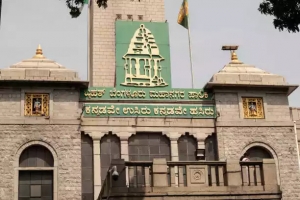Understanding circle rates in Delhi is crucial for anyone planning to buy or sell property in the region. These government-notified rates serve as the minimum value at which a property can be registered. In 2025, changes to Delhi’s circle rates are expected to have significant implications for property transactions, taxation, and market trends. This blog explores everything about Delhi circle rates, their latest revisions, category-wise breakdowns, and what they mean for different areas.
What Are Circle Rates?
Circle rates, also known as guideline rates, are the minimum property valuation set by the government. These rates determine the lowest price at which properties can be sold or registered to prevent undervaluation and revenue loss. The circle rates in Delhi are calculated based on the property’s location, type (residential, commercial, industrial), and other factors.
Also Read:- IGRS AP 2025: Stamp Duty | Property Registration Charges
Why Are Circle Rates Important?
- Revenue Collection: Circle rates ensure fair taxation by preventing undervaluation of properties.
- Fair Market Value: They provide a baseline for property pricing in different zones.
- Legal Compliance: Transactions below circle rates can lead to penalties or complications.
For buyers and sellers alike, knowing the properties of circle rates is essential for navigating Delhi’s real estate market.
Latest Updates on Delhi Circle Rates 2025
The Delhi circle rates latest revision reflects the city’s dynamic real estate market. In 2025, there has been significant buzz around whether the government will increase circle rates to align them with market prices.
- Delhi Circle Rates Increase: The government is expected to revise rates in prime locations such as South Delhi, given the market’s upward trend.
- Circle Rate Freeze: Some less-developed areas might see no revision to encourage investments.
Delhi Circle Rates: Category-Wise Breakdown
Delhi’s circle rates are categorized based on property type and location. Here’s a Delhi circle rate category-wise overview:
-
Residential Properties
- Circle rates for residential properties vary depending on the locality’s classification into A to H categories.
- Prime locations such as Jor Bagh and Vasant Vihar fall under Category A, with higher rates.
- Areas like Uttam Nagar, in Category H, have the lowest circle rates.
-
Commercial Properties
- Commercial zones in Delhi command higher circle rates due to increased demand and ROI potential.
- Connaught Place and Karol Bagh have some of the highest rates in this category.
-
Industrial Properties
- Industrial areas such as Okhla and Naraina have their circle rates calculated based on the property’s usage and floor area.
-
Agricultural Land
- The circle rates for agricultural land are generally lower but are seeing gradual increases in areas close to urban expansions.
Also Read:- IGRS UP 2025: Stamp Duty | Property Registration Charges – 2025
Circle Rates Area-Wise: A Closer Look
Delhi’s geographical diversity is reflected in its Delhi circle rate area-wise differences. Below are a few examples:
- South Delhi (Category A): Vasant Kunj, Jor Bagh, and Hauz Khas command rates starting from ₹7,74,000 per square meter.
- North Delhi (Category B): Ashok Vihar and Shalimar Bagh range between ₹2,45,000 and ₹4,00,000 per square meter.
- West Delhi (Category D-F): Janakpuri and Tilak Nagar have rates ranging from ₹1,00,000 to ₹2,00,000 per square meter.
How Are Circle Rates Revised?
The Delhi circle rate revision process considers factors like inflation, market trends, and property demand. These rates are periodically updated to reflect the current property market scenario.
How to Check Delhi Circle Rates Online
You can check the circle rates for different areas using the e-district Delhi online registration portal. Here’s how:
- Visit the e-District Delhi website.
- Log in or register as a new user.
- Navigate to the “Property Circle Rate” section.
- Select the area and property type to view the applicable rates.
Also Read:- How To Check RERA Registered Projects In Gurgaon In 2025
Implications of Circle Rate Revisions
-
Impact on Buyers and Sellers
- An increase in circle rates means higher registration costs.
- Stagnant circle rates can lead to discrepancies between market and official valuations.
-
Tax Implications
- Higher circle rates increase stamp duty and capital gains tax liabilities.
- For properties sold below circle rates, buyers and sellers may face additional taxes.
Steps to Calculate Circle Rates
Here’s how to calculate the circle rate of a property:
- Identify the area’s category (A to H).
- Check the applicable circle rate for the property type.
- Multiply the rate by the total area of the property.
For instance, if a residential property in Vasant Vihar (Category A) has a circle rate of ₹7,74,000 per square meter and measures 100 sq. m., the minimum valuation will be ₹7.74 crores.
Advantages of Circle Rates
- Transparency in property transactions.
- Accurate determination of stamp duty.
- Prevention of black money circulation in real estate.
Also Read:- Water Fountain for Home Vastu 2025: Direction | Tips | Benefits
Conclusion
Circle rates are an integral part of Delhi’s real estate ecosystem. Understanding the Delhi circle rates latest updates and category-wise differences is essential for buyers, sellers, and investors alike. Whether you’re looking at high-end properties in South Delhi or affordable housing in East Delhi, knowing the circle rates ensures a smoother transaction process.
At Housiey, we aim to empower homebuyers with accurate, updated information on real estate trends and government regulations.
Stay tuned for our blog on IGRS UP, where we’ll break down the intricacies of property registration and stamp duty in Uttar Pradesh.






